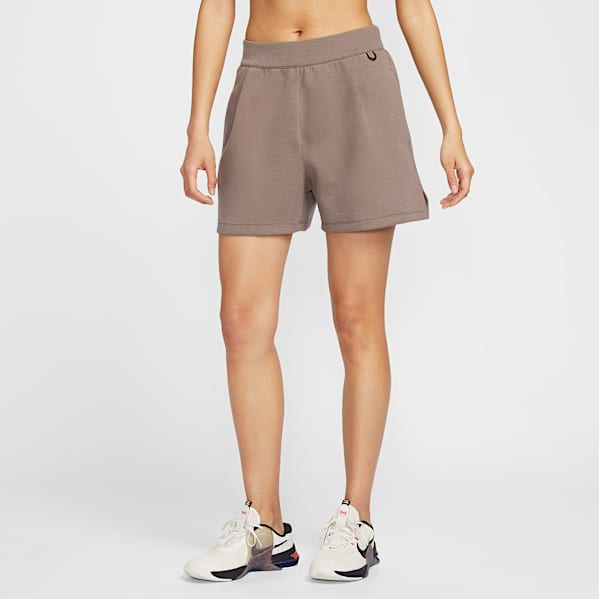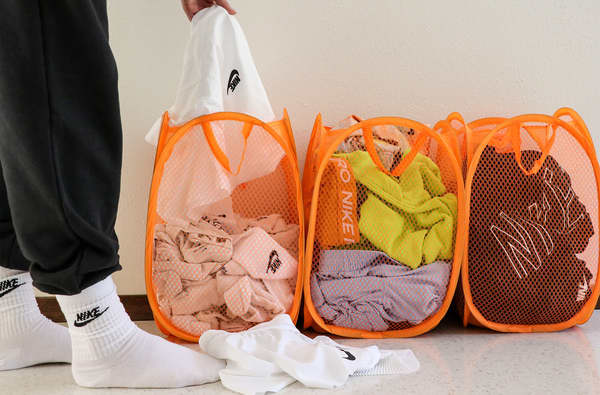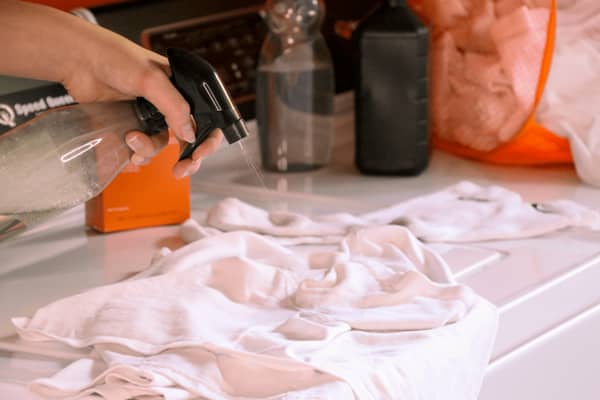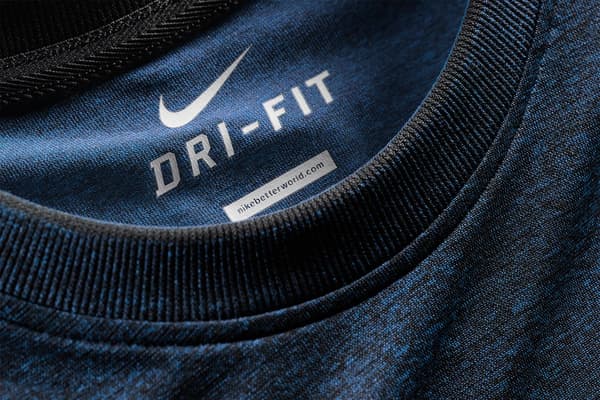How to Get Sweat Stains Out of Shirts
Product Care
A step-by-step guide to banish sweat stains from workout tops and everyday tees.
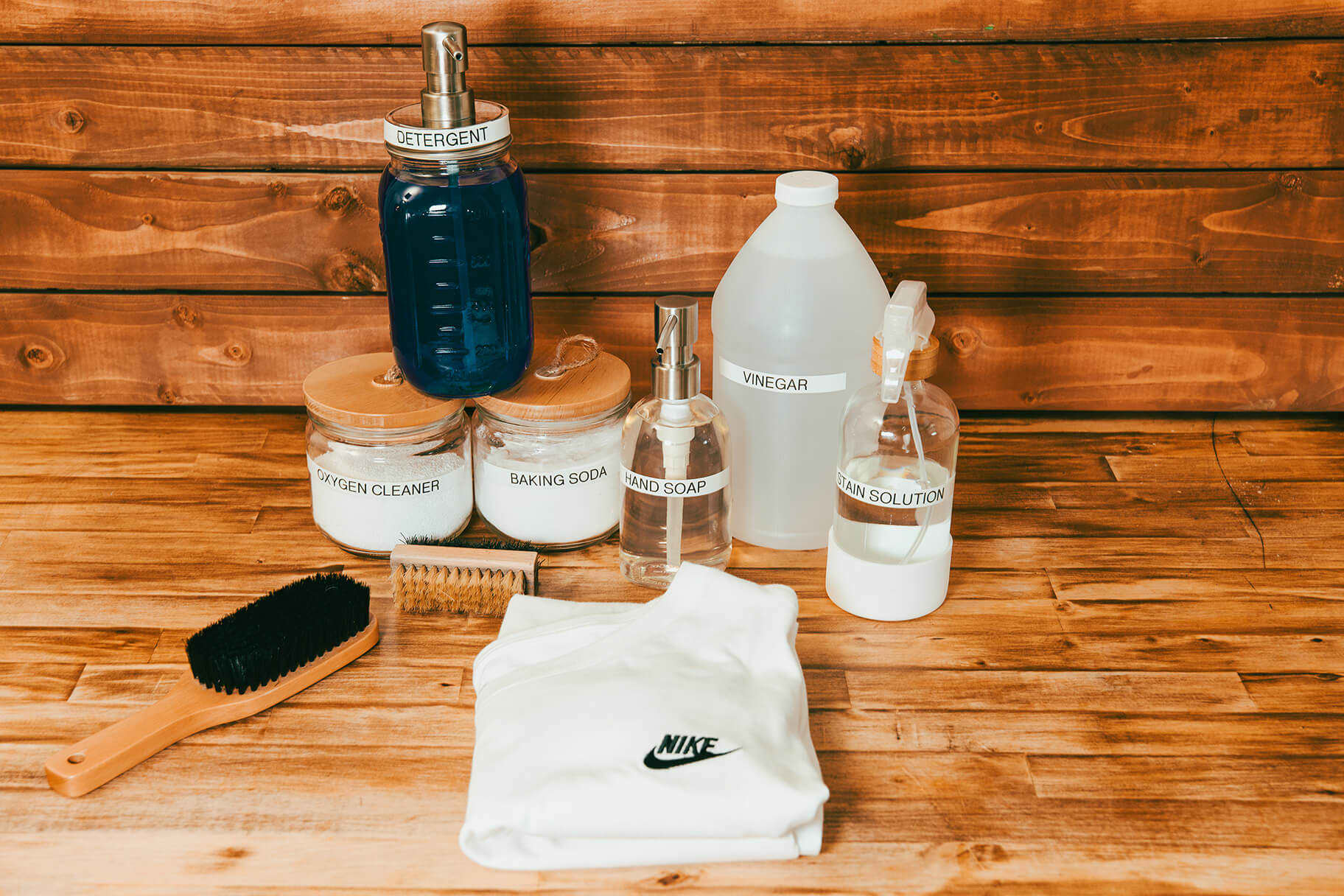
Supplies
- Oxygen bleach
- Liquid hand soap (not foam)
- White vinegar
- Enzyme-based detergent
- Baking soda
Tools
- Horsehair brush
- Spray bottle
- Washing machine
While a good sweat session can help your body and mind feel energized and refreshed, it might do a number on your workout clothes. Due to a chemical reaction that can occur between many antiperspirant products and the proteins in your sweat, the fabric of your workout shirt can end up tarnished with yellowish armpit stains.
Fortunately, there are simple steps you can take to get sweat stains out of shirts. Read on for expert cleaning tips from Patric Richardson, author of “Laundry Love: Finding Joy in a Common Chore.” Below, Richardson shares a four-step tutorial on getting sweat stains out of shirts.
The best part? You might have many of these cleaning solutions on hand.
How to Get Sweat Stains Out of Shirts
1.Gather Cleaning Solutions

Start by creating a specific cleaning kit for tackling sweat stains. Gather liquid hand soap, white vinegar, oxygen bleach and enzyme-based detergent. With these supplies, you’ll have everything you need to tackle tough sweat spots.
While you can use a store-bought stain remover, it’s simple and budget-friendly to make one at home. To make a stain-removing solution, fill up a spray bottle with equal parts white vinegar and water and keep it near the washing machine.
Next, be sure to have on hand the appropriate soap for the materials in your shirt. Unless you’re washing tough polyester jerseys, Richardson recommended skipping the grease-fighting dish soap, as it is typically too acidic for delicate fabrics.
“Nike performance fabrics are not everyday fabrics, you don’t want anything to be too aggressive that it can break down fibers,” said Richardson, who recommends using hand soap that has an oily consistency.
Finally, check to see if your laundry detergent is enzyme-based. These products have naturally occurring proteins that break down protein-based stains, like sweat stains.
(Related: How to Clean Baseball Pants)
2.Treat Sweat Stains Before They Set

When you have all the right cleaning materials on hand, it’s easy to tackle sweat stains early, before they set into the fabric.
“It doesn't matter if the stain stays a week, the key is to treat before you get the agitation and warmth of the washer,” Richardson said.
Richardson recommended spraying the vinegar-and-water cleaning solution on the stained areas before you place the shirt in the washing machine. Unlike time-sensitive stains like blood or wine, sweat stains can be effectively treated any time — as long as they haven’t gone through the washer or dryer yet.
All you’ll have to do to pretreat a sweat stain is spray your vinegar-and-water mixture a few times on the spot, then toss it in the washing machine. While you may be tempted to spray your workout clothes when you get home from the gym before tossing them into the hamper, it’s best to apply the vinegar solution just before the garment goes into the washing machine.
3.Wash the Garment

Once your stained garment is in the washing machine, be sure to use a laundry detergent with enzymes like protease, which helps break down proteins found in sweat. Some detergents also come with oxygen bleach as an ingredient, which adds a boost of cleaning power to the wash cycle.
You can also add a cup of white vinegar for white clothes that need a little extra attention. Be sure to check the care-instructions label on your clothing to see what washing-machine settings are recommended.
Beware of adding too much detergent, which can make your clothes look dingier and mess up their sheen. “Less detergent makes clothes cleaner because they are rinsed out better,” Richardson said. “Two tablespoons is all you need.”
This is especially true for synthetic materials like polyester, which is hydrophobic (doesn’t mix well with water) and oleophilic (loves oils from your skin). As dirt is released into the washing machine tube, too many surfactants (chemicals that allow detergent to mix in water) can float around and resettle on the fabric.
Tip: For a shirt that has sweat stains and an unpleasant smell, try soaking it in cold water for 30 minutes in a cleaning solution of equal parts vinegar and baking soda before washing.
4.Double Down on Stubborn Sweat Stains

Oxygen bleach is your best friend if you want to knock out stubborn perspiration stains on white or colorful shirts. It’s color-safe and won’t damage most fabrics, even if you soak them in an oxygen-bleach cleaning solution overnight. But avoid using it on wool or silk, as it can damage those materials.
Tip: For white shirts, Richardson recommended staying away from chlorine bleach to remove sweat stains. “It breaks down fabric and actually dulls the color,” he said. All white fabric on T-shirts is typically “optic white” dye, which can be distorted with chlorine bleach.
To deal with stubborn sweat stains that persist after a wash cycle, Richardson recommended placing liquid hand soap on the dingy spot. Then sprinkle dry oxygen bleach over it to make a paste. (Note: It is generally acceptable to handle oxygen bleach without gloves, but double check the label on the product to be sure.) If you don’t have oxygen bleach on hand, you can also make a paste out of baking soda and water.
Let the paste sit on the sweat stain for 30 minutes. Then rinse the stained area with hot tap water before washing the shirt in the washer, per the instructions on the care label.
If a sweat stain is particularly stubborn, you may want to use a horsehair brush to work the paste into the fabric. “A horsehair brush is soft enough that it won’t mess up performance fabrics, dull the sheen or pull the thread on the stitching, ” said Richardson, who noted that a plastic-bristle brush may be too harsh.
Words by Yelena Moroz Alpert












